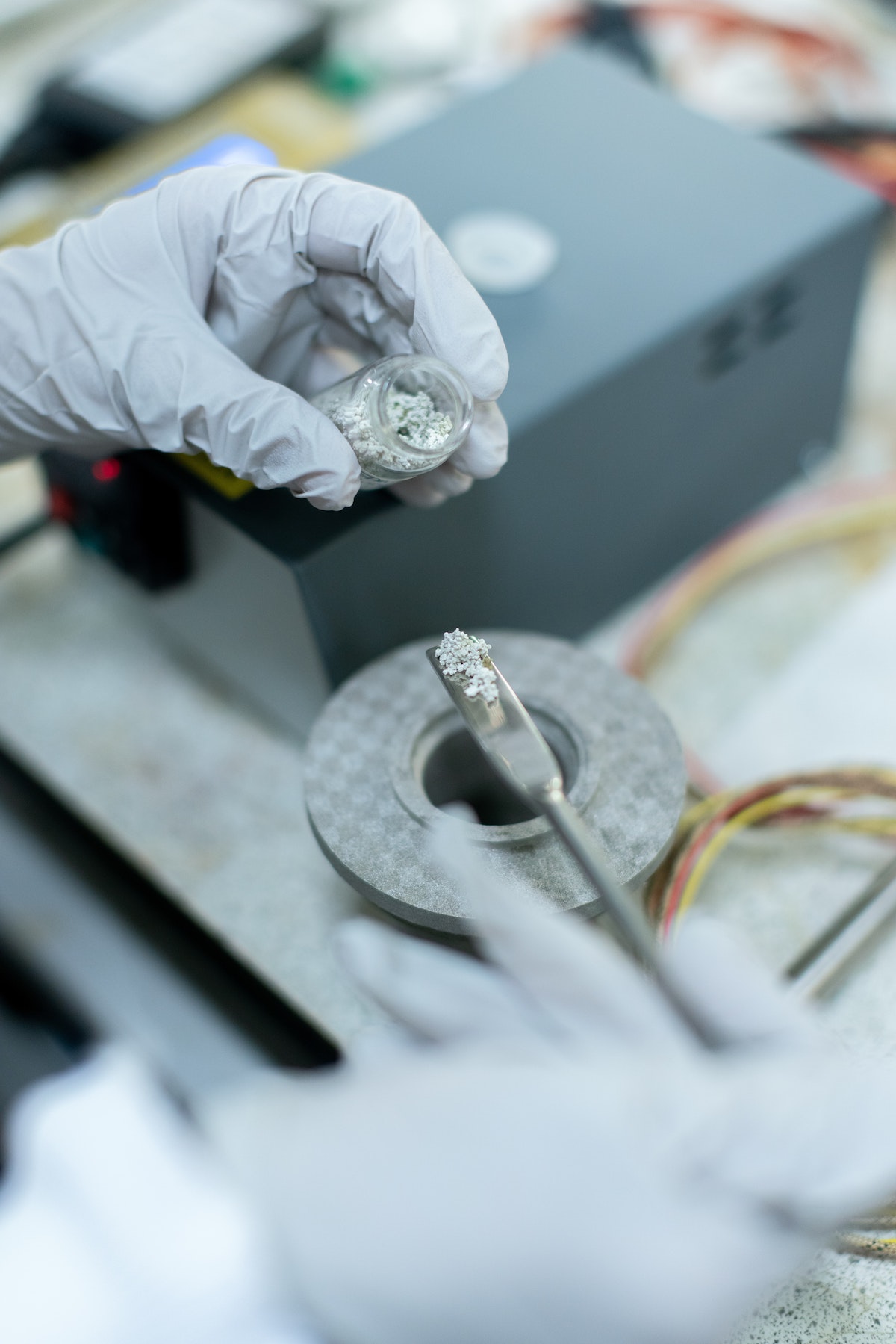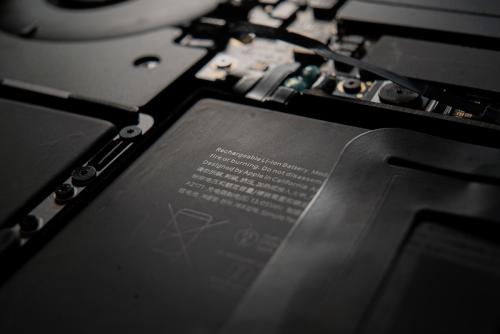Lithium ion batteries have become ubiquitous in our technology-driven world. They are used in a myriad of electronics, power tools, and industrial production equipment. They are also the batteries most often used in electric vehicles. They have the advantage of being rechargeable, lightweight, and fast-charging, with high energy density and a long lifespan.
There are, however, concerns about how the mining of lithium ion battery raw materials and the disposal of potentially hazardous spent batteries affect the environment. These concerns often lead to the question: "Can lithium ion batteries be recycled in a sustainable and environmentally-friendly way?"
The good news is that yes, they can be — and Erie Technical Systems' bulk material handling equipment can help make the lithium ion battery recycling process safer and more efficient.
How Much of a Lithium Ion Battery Can Be Recycled?
A lithium ion battery's power comes from the movement of lithium ions between the electrodes of its cells. Here is a breakdown of the components and materials inside each cell of the battery.
- An anode (or negative electrode) that is most commonly made of lithiated graphite with some amount of polyvinylidene fluoride (PVDF), and copper foil. Manufacturers are exploring other anode materials for lithium ion batteries, with silicone-based anodes becoming increasingly popular.
- A cathode (or positive electrode) that is usually made of combinations of lithium, cobalt, nickel, manganese, aluminum, titanium, and iron. These lithium ion battery cathode materials are most often used in the form of metal oxides and phosphates.
- An electrolyte serving as the medium through which the lithium ions move from one electrode to the other. It is usually made up of lithium salts in an organic solvent, such as ethylene carbonate. It also contains additives that are included to produce specific battery-performance outcomes.
- A separator to prevent contact between the anode and cathode. This is a thin, porous film that is usually made of plastic.
- The battery case, which holds the cells securely in place, is usually made of plastic or aluminum.
Technically speaking, all the lithium ion battery raw materials mentioned above can be recycled. Only limited amounts are salvageable, however, from current recycling methods and the recovered materials tend to lose some of their value upon extraction.
The lithium ion battery cathode materials most often recovered are cobalt, nickel, and manganese. Lithium may also be salvaged from the cathode. The lithiated graphite of the anodes is also salvageable but needs to be further processed if it is to be reused. The electrolyte, which is flammable and toxic to both humans and the environment, is often recovered for reuse, too.
The current processes can be expensive, complicated, and require a large input of energy. This is why the lithium ion battery recycling process is constantly being improved. Making the process more efficient, less costly, and able to produce higher-quality recovered materials would make it more attractive to battery manufacturers.
Consumers would benefit, too. Mining lithium ion battery raw materials is quite expensive and becomes even more so as natural sources are depleted. If manufacturers have access to cheaper recycled materials, this should lead to cheaper batteries and lowered costs of the devices they are used in.
How to Recycle Lithium Ion Batteries
The lithium ion battery recycling process usually begins with completely discharging the batteries. They are then dismantled or shredded. The resulting "black mass" is processed to recover the lithium ion battery cathode materials and anode materials, as well as the electrolyte — either as a whole or some components of it.
Here are the three common recycling processes for lithium ion batteries:
1. Hydrometallurgy
After recovery of the electrolyte, very strong acids, such as hydrochloric, sulfuric, and nitric acid, are used to leach specific materials from the black mass. The process allows for the extraction of cathode metals, including lithium and copper, at relatively low temperatures (generally below 100 °C).
Hydrometallurgy is a low-energy lithium ion battery recycling process with a high recovery rate and relatively high purity of the recovered materials. It is, however, a long process that produces toxic wastewater, due to the acids used. The wastewater must be properly treated before release into the environment.
2. Pyrometallurgy
This is a highly-efficient process for recovering cobalt, nickel, iron, and copper. It requires very high heat (in excess of 700 °C), however, which makes the manganese, aluminum, and electrolyte of the batteries unsalvageable.
Lithium is often also unsalvageable unless the pyrometallurgy process is followed up by hydrometallurgy. The overall process uses a large amount of energy and produces large volumes of waste gas that must be treated before release.
3. Direct physical recycling
This is a low-energy, non-chemical process with a high recovery rate from the shredded black mass. It allows for recovery of several of the lithium ion battery raw materials. These include the electrolyte, as well as aluminum, copper, and iron. Cathodes extracted from the process are relithiated for reuse.
Direct physical recycling is a more sustainable and environmentally-friendly process of lithium ion battery recycling than both hydrometallurgy and pyrometallurgy. It is, however, a much longer process than the other two methods. It is also a very expensive process, with costs likely to be higher than the cost of mining new lithium ion battery raw materials.

Bulk Material Handling Equipment's Role
After shredding, the black mass is most often transported to a new location where the rest of the processes in recycling lithium ion batteries take place. The safe loading, transport, and unloading of the material is a priority since the organic electrolytes and heavy metal ions pose great danger to humans and the environment.
This is where bulk material handling equipment comes into play. Bulk filling equipment can safely and effortlessly place shredded material from the lithium ion battery recycling process into bulk containers. Once the materials get to their next destination in the recycling process, bulk material unloading equipment can safely discharge them from their containers.
Moving the materials along in the active recycling process can also be made easier and more effective with the use of conveyors, pallet dispensers, and pallet stackers — all specifically designed to handle bulk material.
Customized bulk handling solutions from ETS
ETS designs and customizes bulk handling solutions to suit recyclers' particular needs. Our bulk fillers and unloaders, for example, can be used with bulk bags, bulk boxes, bulk totes, and bulk drums.
Select from our range of bulk fillers which includes our fully-automated SysteMAX bulk filling systems. Check out whether our Bulk Container Dumper or UltiMAX Bulk Bag Unloader would be right for you. Plus, whether you need to transfer bulk material vertically or horizontally, across an expansive floor or in a tight space, we have conveyors and feeders to do the job.
Reach out to Erie Technical Systems today to also find out how our heavy-duty industrial pallet dispensers and pallet stackers can be integrated into your customized lithium ion battery recycling process.

